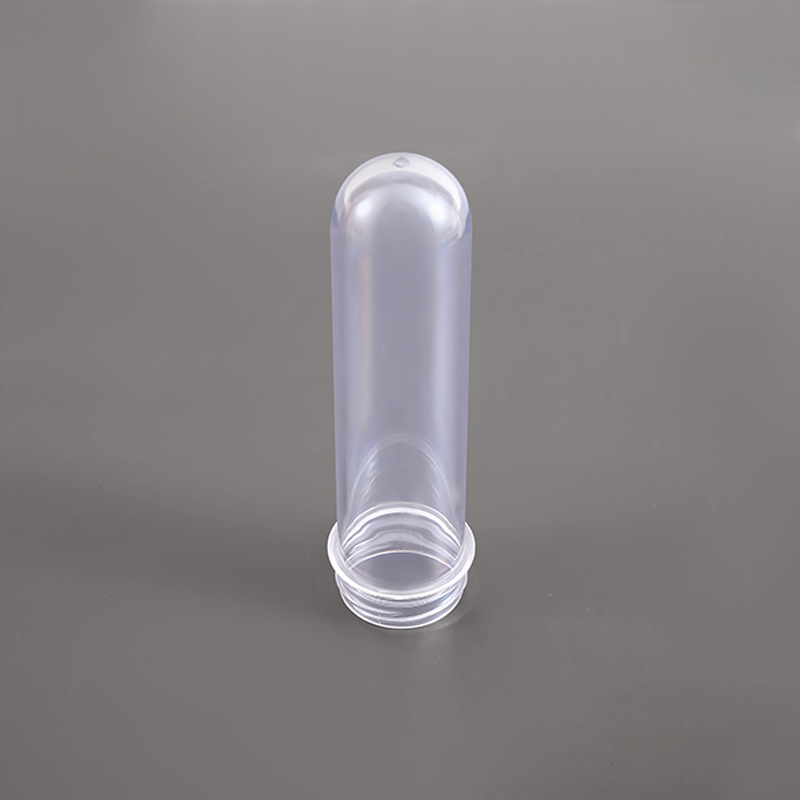Polyethylene Terephthalate (PET) is one of the commonly used plastics in the packaging industry, especially for beverage containers, food packaging, and consumer goods. The 28mm PET preform is a widely used intermediate product that plays a crucial role in the production of bottles, jars, and other containers. Understanding the processing steps of 28mm PET preforms is vital for manufacturers to ensure quality, efficiency, and consistency in the final products.

The Creation of the 28mm PET Preform
The step in processing 28mm PET preforms is their creation through injection molding. In this process, PET resin is melted and injected into a mold cavity to form the preform. The mold is designed with a specific shape that represents the shape of the final container's neck finish, including the 28mm diameter required for bottle caps.
Material Selection: The process begins by selecting high-quality PET resin that is suitable for molding. The resin is typically in the form of small pellets, which are fed into an injection molding machine.
Melting: The PET pellets are melted inside the injection molding machine using heat and pressure. The molten PET is then injected into a preform mold under high pressure, forming the shape of the preform.
Molding: The mold is designed with a core and cavity that shapes the preform's neck and body. The neck finish of the preform is critical because it must precisely match the 28mm diameter required for bottle caps, whether they are screw-on caps, ROPP (Roll-On Pilfer Proof), or CRC (Continuous Thread Closure) closures.
Cooling: Once the preform is injected into the mold, it is allowed to cool and harden before being ejected from the mold. This process solidifies the PET and ensures that the preform retains its shape and structural integrity.
The resulting 28mm PET preforms are typically about 3-6 inches long, with a slightly wider neck that is formed to fit the appropriate closure system.
Preform Quality Control and Inspection
After the preforms are molded, they undergo thorough quality control checks. This step is essential to ensure that each preform meets the required specifications, such as the precise 28mm diameter of the neck finish, wall thickness, and overall shape.
Visual Inspection: The preforms are inspected for defects such as cracks, uneven wall thickness, or deformations. The integrity of the neck finish is also checked to ensure it aligns with the required cap dimensions.
Dimensional Checks: The neck diameter (28mm) and the overall size of the preform are measured with specialized tools to ensure that they meet the required tolerances. Any deviations can cause issues in the next steps of processing, such as sealing or filling.
Physical Testing: The preforms may also undergo stress tests to ensure that they can withstand the pressures associated with the later stages of processing, including blow molding and filling. This may include testing for heat resistance, as well as checking for potential weaknesses in the material.
Blow Molding Process
Once the 28mm PET preforms have passed quality checks, they proceed to the blow molding process. Blow molding is used to expand the preform into the desired shape of the final container, such as a bottle or jar. The blow molding process can be performed using either stretch blow molding or blow molding, depending on the type of product being produced.
Preform Heating: The step in blow molding is to heat the preform. The preform is heated in an oven to a specific temperature, which makes the PET material more pliable and easier to mold. The temperature must be carefully controlled to ensure uniform heating and prevent the formation of weak spots.
Stretching and Blowing: After the preform is heated, it is inserted into a mold cavity that corresponds to the final shape of the bottle or container. Air is then blown into the preform, causing it to expand and take the shape of the mold. In stretch blow molding, a mechanical stretching rod is also used to elongate the preform before air is injected. This process helps to create containers with uniform wall thickness and better mechanical properties.


 English
English Español
Español 中文简体
中文简体